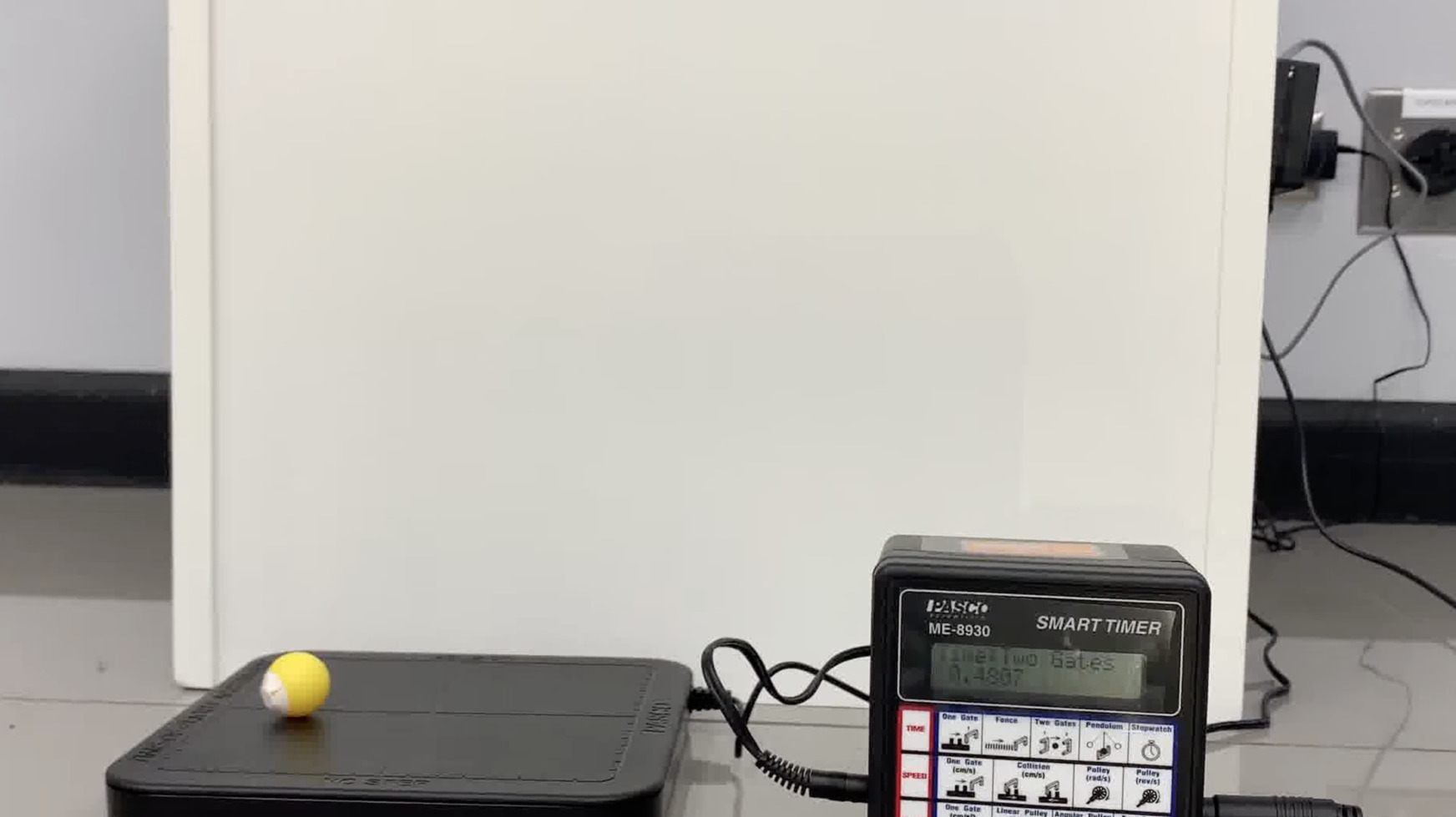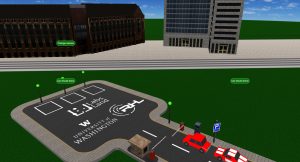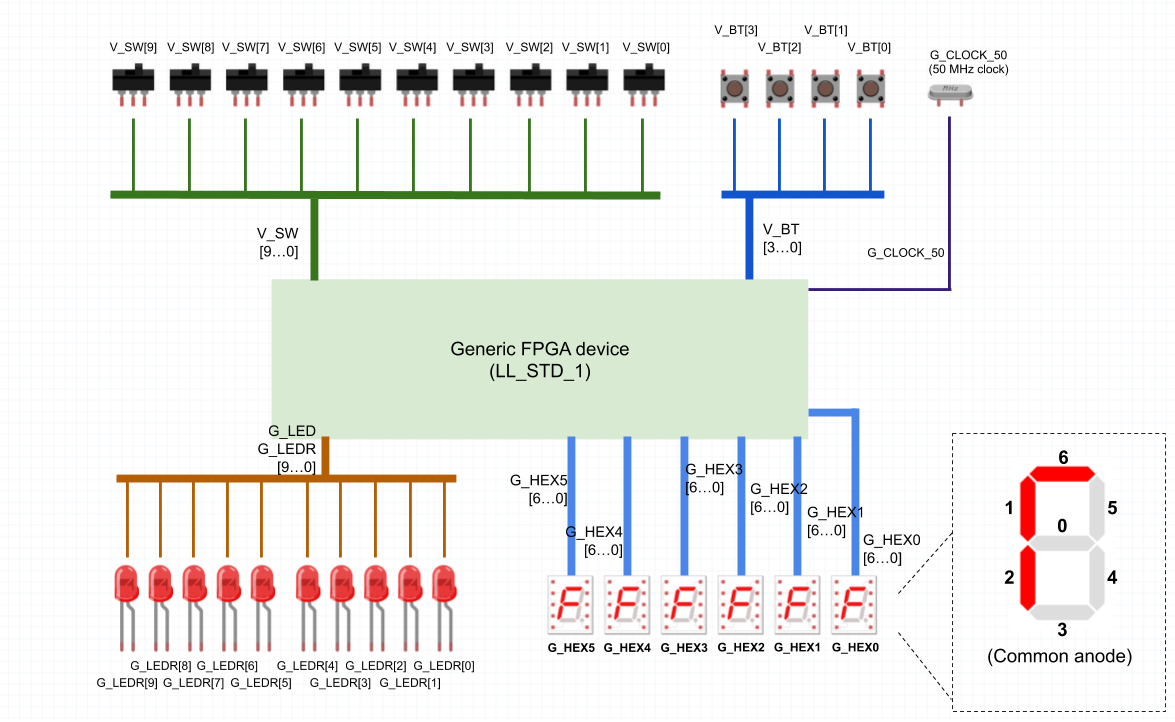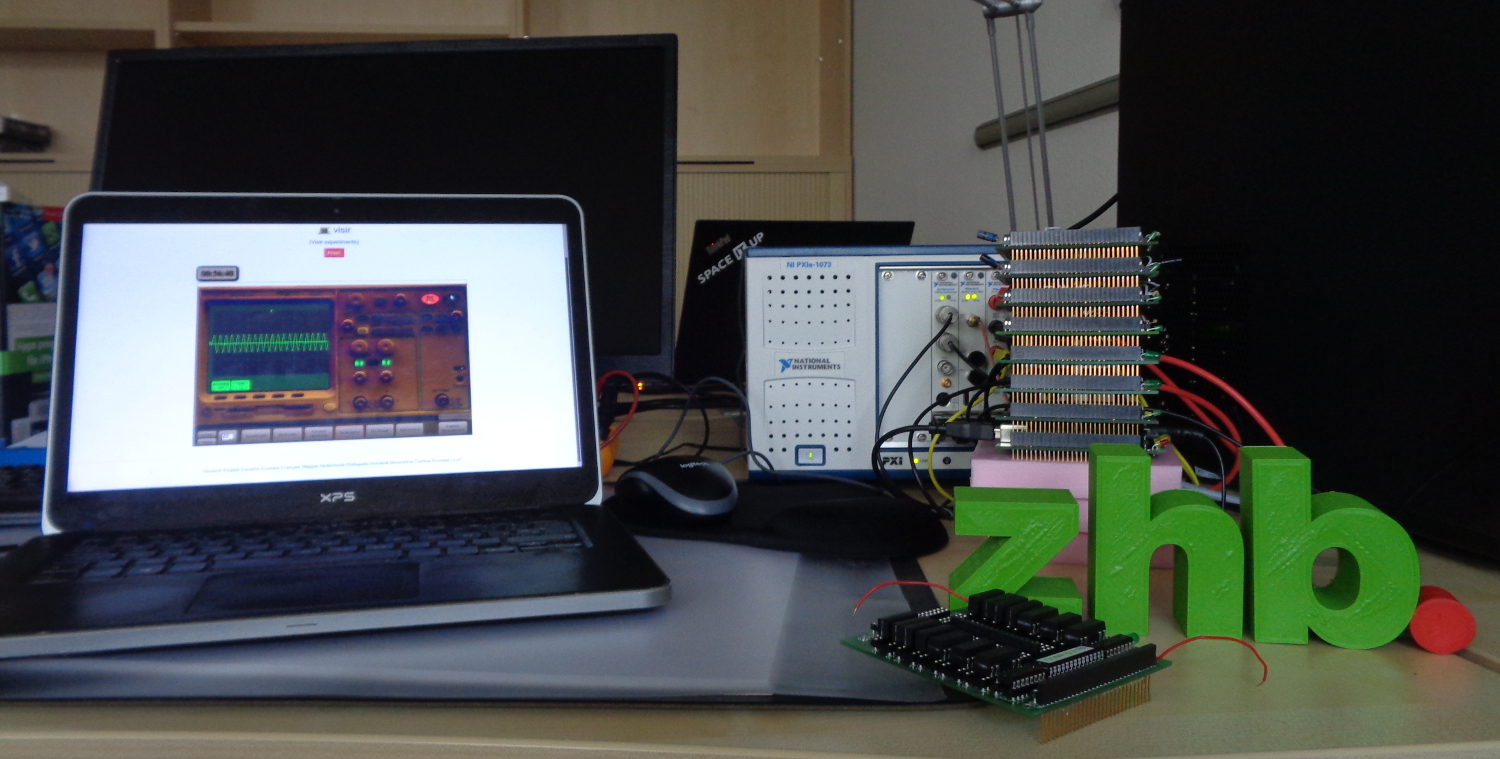The concept of gravity is a fundamental principle in physics that describes the force of attraction between two objects with mass. Understanding this concept is essential for students studying physics and related fields. To help students gain a deeper understanding of gravity, the LabsLand free fall laboratory was designed in collaboration with the Universidad Estatal a Distancia (UNED) from Costa Rica. This remote laboratory offers a convenient and safe way for students to conduct experiments on gravity and energy conservation. By using the free fall laboratory, students can gain a hands-on understanding of this important concept and apply it to real-world situations. In this blog post, we will take a closer look at the free fall laboratory and the activities it offers.
The Distance State University (UNED)
The Distance State University (UNED) is a public university in Costa Rica. It was founded in 1979 and offers a wide range of programs in fields such as science, engineering, and humanities.
In collaboration with LabsLand, UNED played a critical role in the design and development of the free fall laboratory. The team led by Carlos Arguedas provided their expertise in physics, education and ultraconcurrent laboratories to create with LabsLand a laboratory that is both effective and engaging for students. By working with UNED, LabsLand was able to create a laboratory that aligns with the mission to promote high-quality and accessible scientific and technical education.
The collaboration between LabsLand and UNED is an example of how public institutions and companies can work together to provide innovative tools for education. The free fall laboratory is a valuable tool that can help students learn about gravity and other important concepts in physics. Through their collaboration, LabsLand and UNED are helping to advance science education and promote the study of physics not only in their respective countries but in the world.
What is the LabsLand free-fall laboratory?
The LabsLand free fall laboratory is a remote laboratory that allows students to conduct experiments on gravity and energy conservation. The laboratory offers a convenient and safe way for students to learn about these fundamental concepts in physics.
The free fall laboratory consists of various components, including a platform where students can place objects of different masses, an electric switch that can be used to release the objects, and a receiving device that measures the time it takes for the objects to fall. The laboratory is equipped with sensors and other technology that enable students to accurately measure and record the data from their experiments.
Students can choose from a variety of objects with different masses and release them using the electric switch. The receiving device will measure the time it takes for the objects to fall, allowing students to experimentally calculate the acceleration due to gravity and conduct other experiments related to free-falling objects.
The free fall laboratory offers activities for varying levels, making it suitable for students of all abilities. By using the laboratory, students can gain a hands-on understanding of gravity and other fundamental concepts in physics. It is a valuable tool for educators looking to engage their students in hands-on learning and promote a deeper understanding of these important ideas.
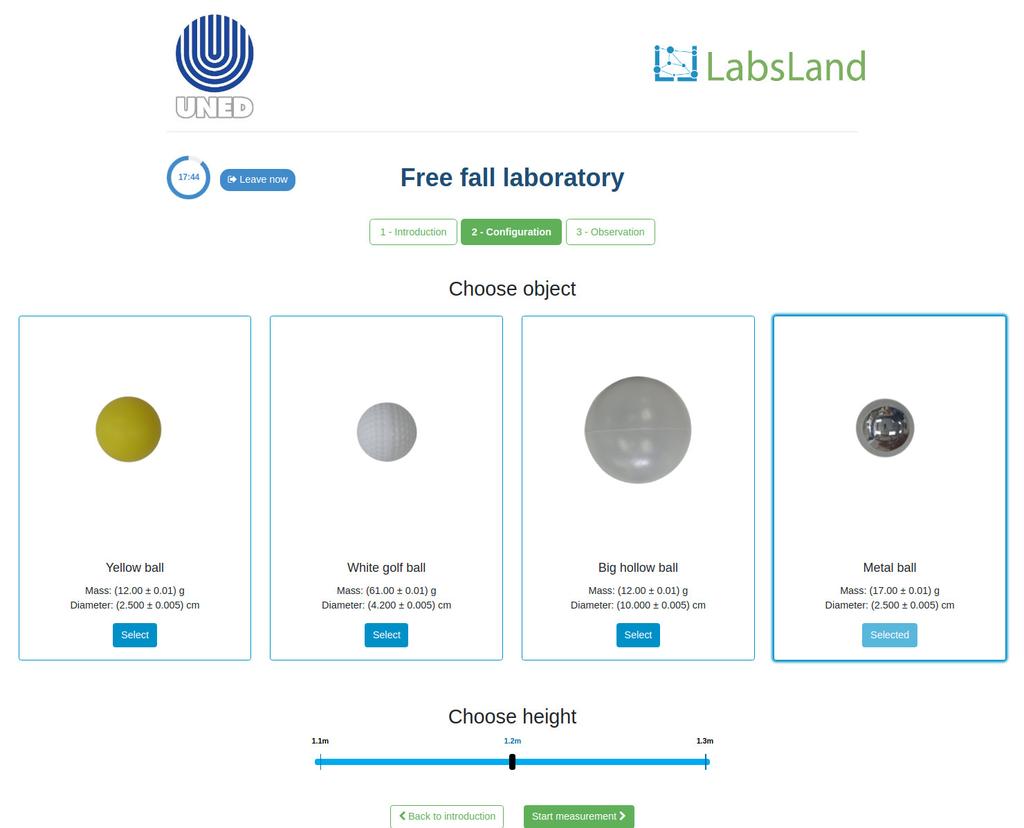
Potential activities
The LabsLand free fall laboratory offers a wide range of activities that students can do to learn about gravity and energy conservation. Some potential activities include:
- Experimenting with different objects to see how their mass and distance from the ground affect the time it takes for them to fall. By measuring the time it takes for an object to fall, students can calculate the acceleration due to gravity and gain a deeper understanding of this fundamental concept.
- Using the equations of motion to calculate the acceleration due to gravity and compare the results to the measurements obtained from the free fall laboratory. This can help students understand how the equations of motion can be used to describe the motion of objects under the influence of gravity.
- Conducting experiments to explore the conservation of energy. For example, students can measure the initial and final kinetic and potential energies of an object as it falls, and verify that the total energy is conserved. This can help students understand the important concept of energy conservation.
- Investigating the effects of air resistance on the motion of falling objects. Students can conduct experiments to see how the presence of air resistance affects the time it takes for an object to fall, and compare their results to the predictions of theoretical models. This can help students understand the role of air resistance in the motion of falling objects.
- Designing and conducting their own experiments using the free fall laboratory. This can help students develop their critical thinking and problem-solving skills, and encourage them to explore new ideas and concepts in physics.
Overall, the LabsLand free fall laboratory offers a wide range of potential activities that can help students learn about gravity and other fundamental concepts in physics. These activities can be tailored to different levels of ability and interest, making the laboratory suitable for students of all ages and backgrounds.
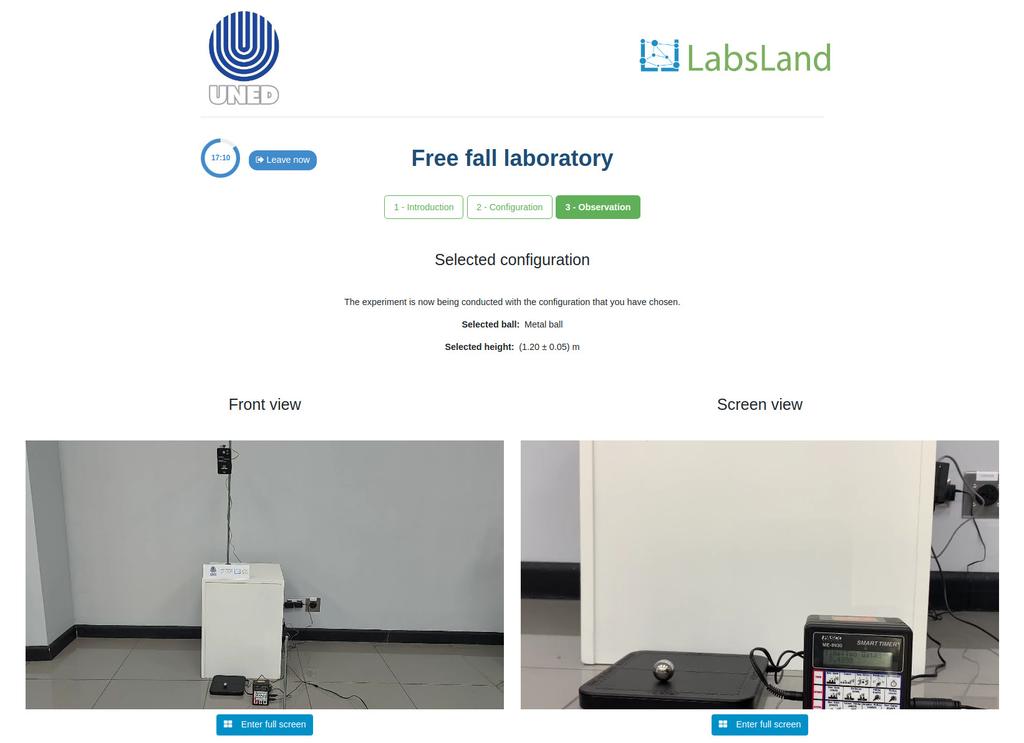
Benefits of using the LabsLand Free-Fall laboratory
There are many benefits of using the LabsLand free fall laboratory in the classroom. Some of the key benefits include:
- Convenience: The laboratory is remote, which means students can access it from anywhere with an internet connection. This makes it easy and convenient for students to conduct experiments, even if they don’t have access to a traditional laboratory.
- Safety: The laboratory is designed to be safe for students to use. This can help reduce the risks associated with conducting experiments in a traditional laboratory setting.
- Engaging: The laboratory offers a range of activities that are engaging and interactive for students. The activities are designed to be hands-on and stimulating, which can help students stay motivated and interested in learning about physics.
- Flexible: The laboratory offers activities for varying levels, making it suitable for students of all abilities. Educators can tailor the activities to the needs and interests of their students, which can help ensure that all students are able to learn and benefit from the laboratory.
- High-quality: The laboratory is designed and maintained by experienced professionals who have expertise in physics and education. This ensures that the laboratory is of high quality and provides accurate and reliable results.
Overall, the LabsLand free fall laboratory is a valuable tool that can help students learn about gravity and other important concepts in physics. It offers a convenient, safe, and engaging way for students to gain a hands-on understanding of these concepts, and can be a valuable resource for educators looking to enhance their teaching and promote student learning.
How to access the lab
To access the LabsLand free fall laboratory, users will need to register for an account on the LabsLand website. Once they have registered, they can log in to the website and access the laboratory. Users will be able to see the different components of the laboratory and the activities that are available.
Instructors who want to use the laboratory for their school or university can also request a trial custom LabsLand space. This will allow them to manage access to the laboratory for their students and track their progress.
Users can try out the laboratory for free before deciding whether to purchase a subscription. This allows them to see how the laboratory works and get a feel for the activities it offers. If they like the laboratory, they can purchase a subscription that gives them access to all of the laboratory’s features and activities.
The registration process is simple and straightforward, and only takes a few minutes to complete. Users can register for an account and try out the laboratory without any obligation to purchase a subscription. This allows them to explore the laboratory and see if it is a good fit for their needs.
Frequently Asked Questions
The following are some frequently asked questions about the LabsLand free fall laboratory:
- Is the laboratory safe for students to use?
Yes, the laboratory is designed to be safe for students to use. This can help reduce the risks associated with conducting experiments in a traditional laboratory setting.
- Can the laboratory be used by students of all abilities?
Yes, the laboratory offers activities for varying levels, making it suitable for students of all abilities. Educators can tailor the activities to the needs and interests of their students, which can help ensure that all students are able to learn and benefit from the laboratory.
- How does the laboratory work?
The laboratory consists of various components, including a platform where students can place objects of different masses, an electric switch that can be used to release the objects, and a receiving device that measures the time it takes for the objects to fall. The laboratory is equipped with sensors and other technology that enable students to accurately measure and record the data from their experiments.
- Are there any requirements for using the laboratory?
To use the laboratory, students will need access to a computer or other device with an internet connection. They will also need to be familiar with the principles of physics and the equations of motion, as these are used in many of the activities offered by the laboratory.
- Can educators customize the activities in the laboratory?
Yes, educators can customize the activities in the laboratory to suit the needs and interests of their students. They can choose from a variety of activities, and can also design and conduct their own experiments using the laboratory. This can help educators tailor the laboratory to the specific needs and goals of their students.
Alignment with Educational Standards
The free fall laboratory is designed to be aligned with educational standards such as the Next Generation Science Standards (NGSS) and the International Baccalaureate (IB) curriculum. This means that the laboratory can be used to help students learn and apply key concepts in physics, such as gravity, energy conservation, and motion.
Alignment with NGSS
The free fall laboratory is aligned with several dimensions of the NGSS. These dimensions include the science and engineering practices, the crosscutting concepts, and the disciplinary core ideas in physics. By using the laboratory, students can engage in hands-on activities and experiments that help them understand and apply these dimensions of the NGSS. For example, students can use the laboratory to investigate the relationship between the mass of an object and the force of gravity acting on it, or to explore the conservation of energy in a falling object. These activities can help students gain a deeper understanding of the physical principles behind these concepts and apply them to real-world situations.
Alignment with IB
The free fall laboratory is also aligned with the IB physical and mathematical sciences curriculum. By using the laboratory, students can engage in hands-on activities and experiments that help them understand and apply key concepts in physics, chemistry, and mathematics. For example, students can use the laboratory to investigate the relationship between the mass of an object and the force of gravity acting on it, or to explore the conservation of energy in a falling object. These activities can help students gain a deeper understanding of the physical principles behind these concepts and apply them to real-world situations. The laboratory is also aligned with the IB’s approach to teaching and learning, which emphasizes inquiry-based and experiential learning. This means that students can use the laboratory to develop the skills and knowledge they need to be successful in their studies and future careers.
Conclusions
The free fall laboratory is a valuable tool for students and educators who want to learn about gravity and other fundamental concepts in physics. By using the laboratory, students can conduct experiments and engage in hands-on activities that help them understand and apply these concepts. The laboratory is designed to be easy to use and accessible to students of all abilities. By using the free fall laboratory, students and educators can gain a deeper understanding of gravity and other important concepts in physics, and apply them to real-world situations.

